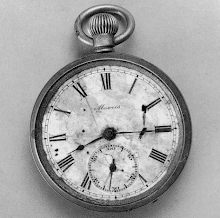"During the war, there was no military research more urgent or secret than what took place in this corner of the District,” USACE Col. Estee Pinchasin said. About 1,500 chemists, scientists and soldiers worked at what was known as the American University Experiment Station to research chemical warfare in 1917 and 1918. When the war, ended many of those weapons and chemicals were buried in what is now one of the most expensive neighborhoods in D.C. ... The biggest deposit was at 4825 Glenbrook Road. “The team discovered seven different chemical agents, six other chemicals that had unique military applications,” Pinchasin said. “And Glenbrook Road was the only site in the United States where weaponized arsine was encountered in 75 mm projectiles.”
Dec 21, 2021
WWI Chemical Weapons Cleanup Completed at 4825 Glenbrook Rd
After decades of efforts, the U.S. Army Corps of Engineers [USACE] said Tuesday that cleanup at the site in Northwest D.C. along Glenbrook Road, where World War I chemical weapons were tested and disposed of, is complete ... The project in the Spring Valley neighborhood at 4825 Glenbrook Road NW — part of a larger area known as the American University Experiment Station, and once called the “mother of all toxic dumps” — started in 1993, when a contractor unearthed buried military ordnance on nearby 52nd Court NW.
Digging and research indicated the likely presence of mustard gas and lewisite — an arsenic-containing blister agent. The property was tested between 2007 and 2010, and the decision was made in 2012 to remove the house at the site. Starting in 2013, USACE began excavating under the house’s foundation. The work was done under a huge high-tech enclosure, which prevented chemicals from escaping into the neighborhood. Over the years, there had been some setbacks. In 2017, seven workers were sickened and temporarily hospitalized during the cleanup.
The entire site covers more than 600 acres of Spring Valley. “This one quarter acre property had the most significant contamination and the largest burial pits we discovered in Spring Valley,” said Brenda Barber, who has overseen the Glenbrook Road site for USACE for nine years. The home that once stood there was taken down. Beneath it they found more than 2,000 pounds of laboratory debris, 53 glass containers still filled with chemical agents, 7,500 tons of contaminated soil and more than 550 munitions ... USACE expects the remaining work in the area to take about two to three more years. The remediation project has cost about $300 [$338] million so far [pg. 10].
Subscribe to:
Posts (Atom)




